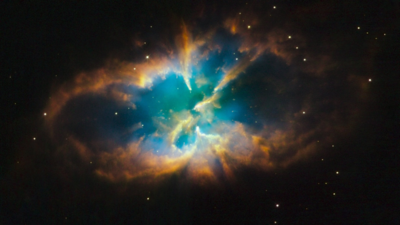How to Spot and Interpret Conjunctions in Your Own Birth Chart


Your birth chart, or natal chart, is essentially a screenshot of the heavens at the exact time of your birth—a personalised map of the stars that can offer deep insights into your personality and life journey. Of course, to understand it, you must understand where what goes and why, and to understand that is why aspects exist. Aspects are the dynamics between planets in your chart, each and all planets that exists. If one planet aspects another, it can be either something very positive or something very negative. A conjunction is one of the aspects to look out for, a very possitive one. But what exactly is a conjunction, and how can you spot and interpret them in your own natal chart? Let’s embark on this cosmic adventure together.
In astrology, a conjunction occurs when two or more planets are snuggled up close together in the same zodiac sign. Their energies blend and amplify each other. This means that these planets were in the same area of the sky when you were born. When planets are conjunct, they don’t just pass by each other—they merge, creating a powerful influence that can significantly shape your traits and behaviours.
Steps to Spot Conjunctions in Your Birth Chart
- Get Your Birth Chart: First, you’ll need a copy of your birth chart. You can get one for free from various astrology websites. You’ll need your birth date, exact time, and place of birth to create an accurate chart.
- Familiarise Yourself with Planet Symbols: Each planet is represented by a specific symbol. For example, the Sun is a circle with a dot in the middle, and the Moon looks like a crescent. Most charts will have a legend or key to help you identify them.
- Look at the Chart Wheel: Your birth chart is usually displayed as a circle divided into 12 sections, called houses. The planets are plotted around this circle.
- Identify Planets Close Together: Look for planets that are next to each other in the same house or zodiac sign. In astrology, a conjunction generally means planets are within about 8 degrees of each other. Some astrologers use a wider or narrower range, but 8 degrees is a good starting point.
- Check the Degrees: Next to each planet symbol, you’ll see a number indicating its degree in the sign. If two planets are less than 8 degrees apart, you have a conjunction.
Now that you’ve spotted a conjunction, here’s how to understand what it means.The planets involved combine their influences. For example, if Mercury (communication) is conjunct Venus (love and harmony), you might be very charming and good at expressing affection. Conjunctions amplify the energies of the planets. They become more significant in your chart because they work together and help each other out. The sign tells you how the energy expresses itself, and the house shows the life area affected. For instance, a conjunction in Leo (a sign associated with creativity and leadership) in the 5th house (which relates to fun and self-expression) could mean you’re naturally inclined towards artistic pursuits.Focus on the Sun, Moon, Mercury, Venus, and Mars when you’re just beginning to examine the aspects in your chart. These personal planets have a strong impact on your day-to-day life because they basically dictate how it goes for us. There are many websites and books that offer interpretations of different planetary combinations. They can provide insights into what a specific conjunction might mean for you.
Think about how the traits associated with the planets show up in your life. Do you recognise these energies in yourself?Understanding conjunctions in your birth chart can help you gain deeper self-awareness. It highlights areas where you have strong potential or challenges. For example, a conjunction between the Sun and Saturn might suggest a serious demeanour and a strong sense of responsibility, and it is knowing this that can help you gain confidence in yourself while moving onto better things.





